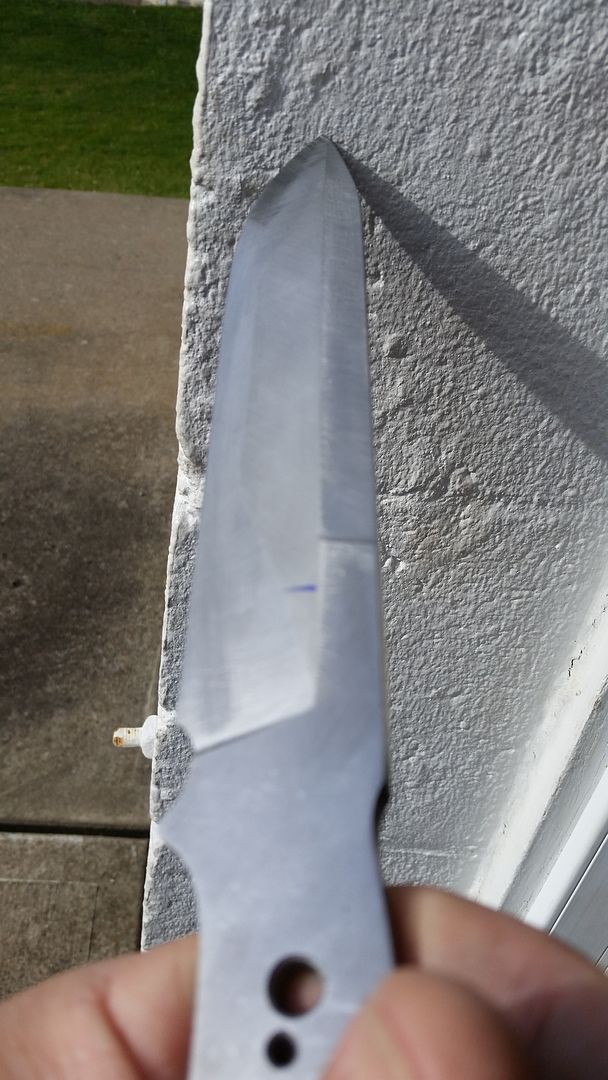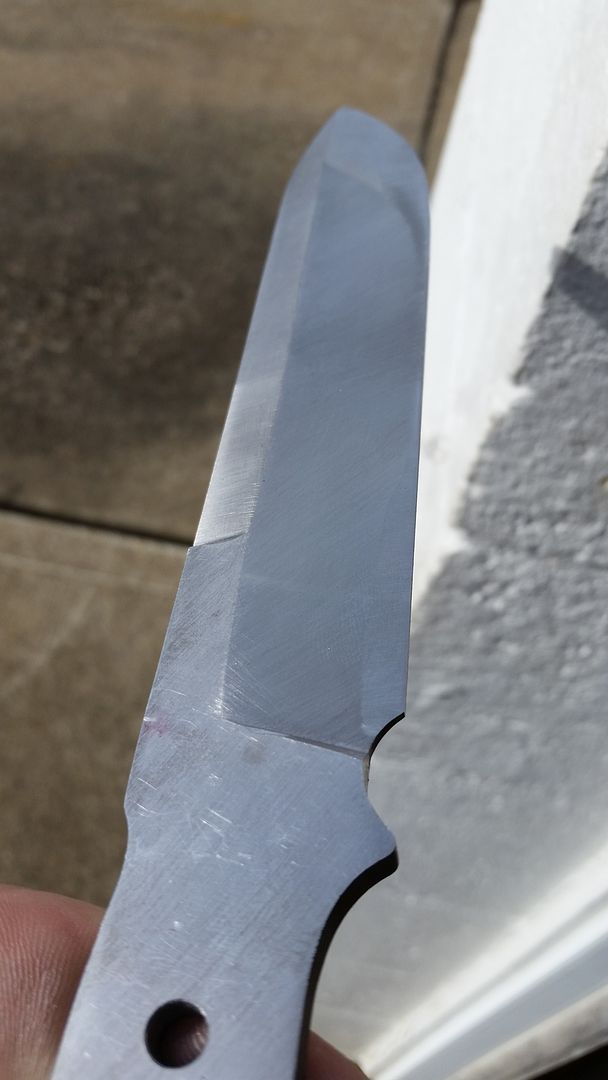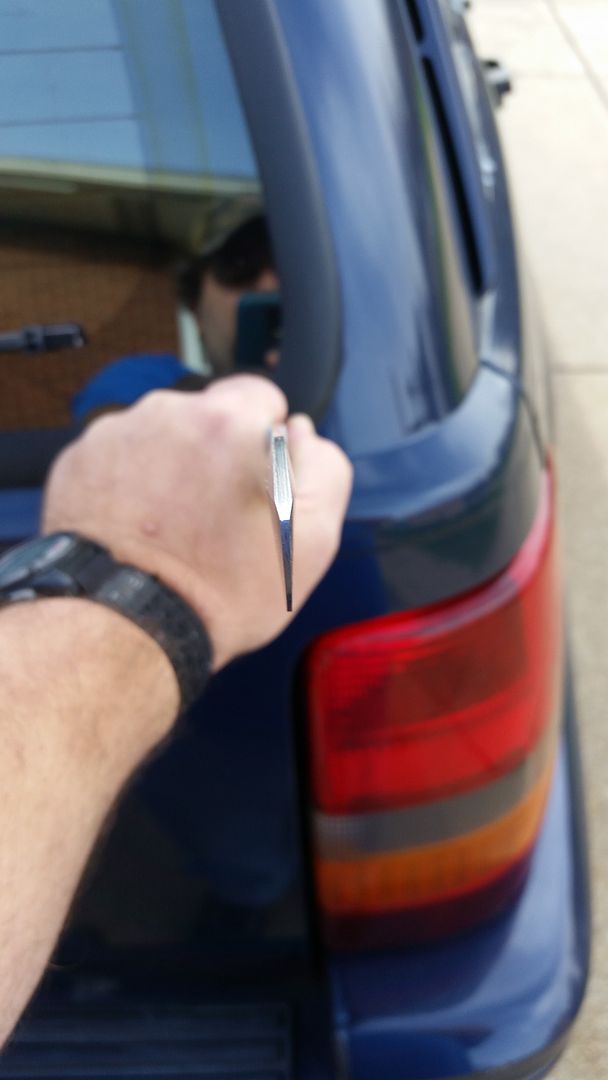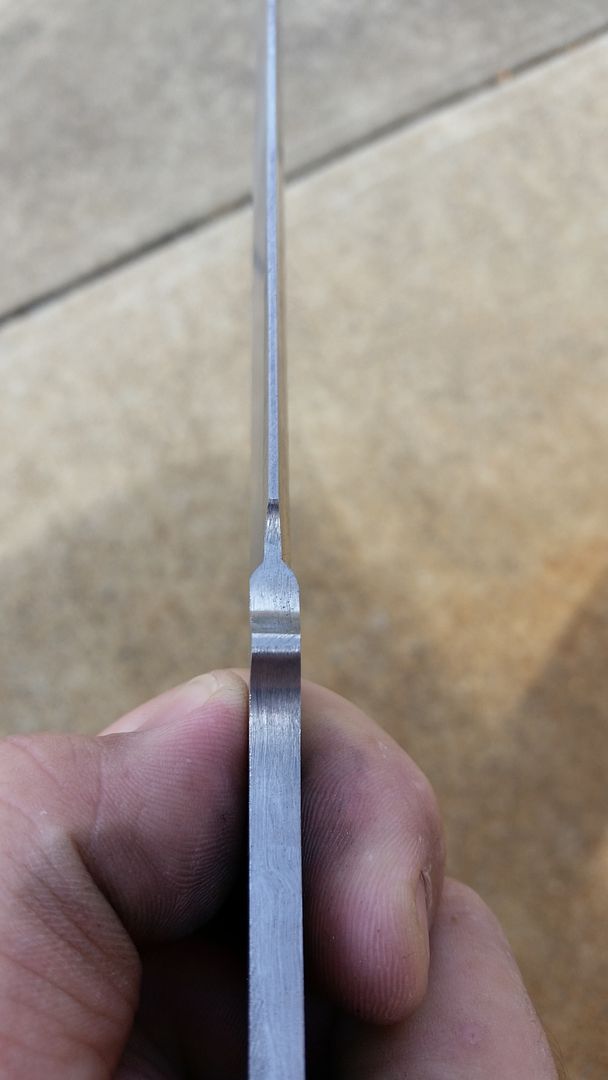Ok, small, pic-less update...
Got the bevel filed in on one side, sanded all the big scratches out using the file for a sanding block. (Made sense to me, what the heck)
Of course I forgot to snap a pic before I flipped it over and clamped it down, but I'll get a couple once I get the other side cut in.
By the way, filing in bevels that go nearly an inch up a blade that's 7" long on .210 stock, it takes a while!! Lol
Got the bevel filed in on one side, sanded all the big scratches out using the file for a sanding block. (Made sense to me, what the heck)
Of course I forgot to snap a pic before I flipped it over and clamped it down, but I'll get a couple once I get the other side cut in.
By the way, filing in bevels that go nearly an inch up a blade that's 7" long on .210 stock, it takes a while!! Lol




